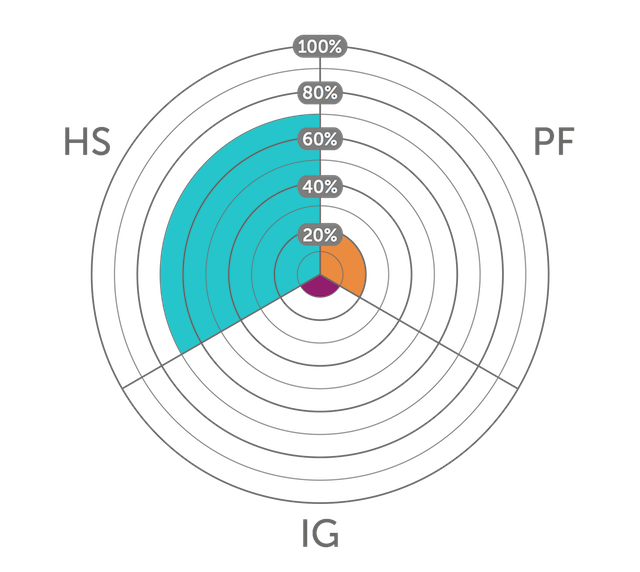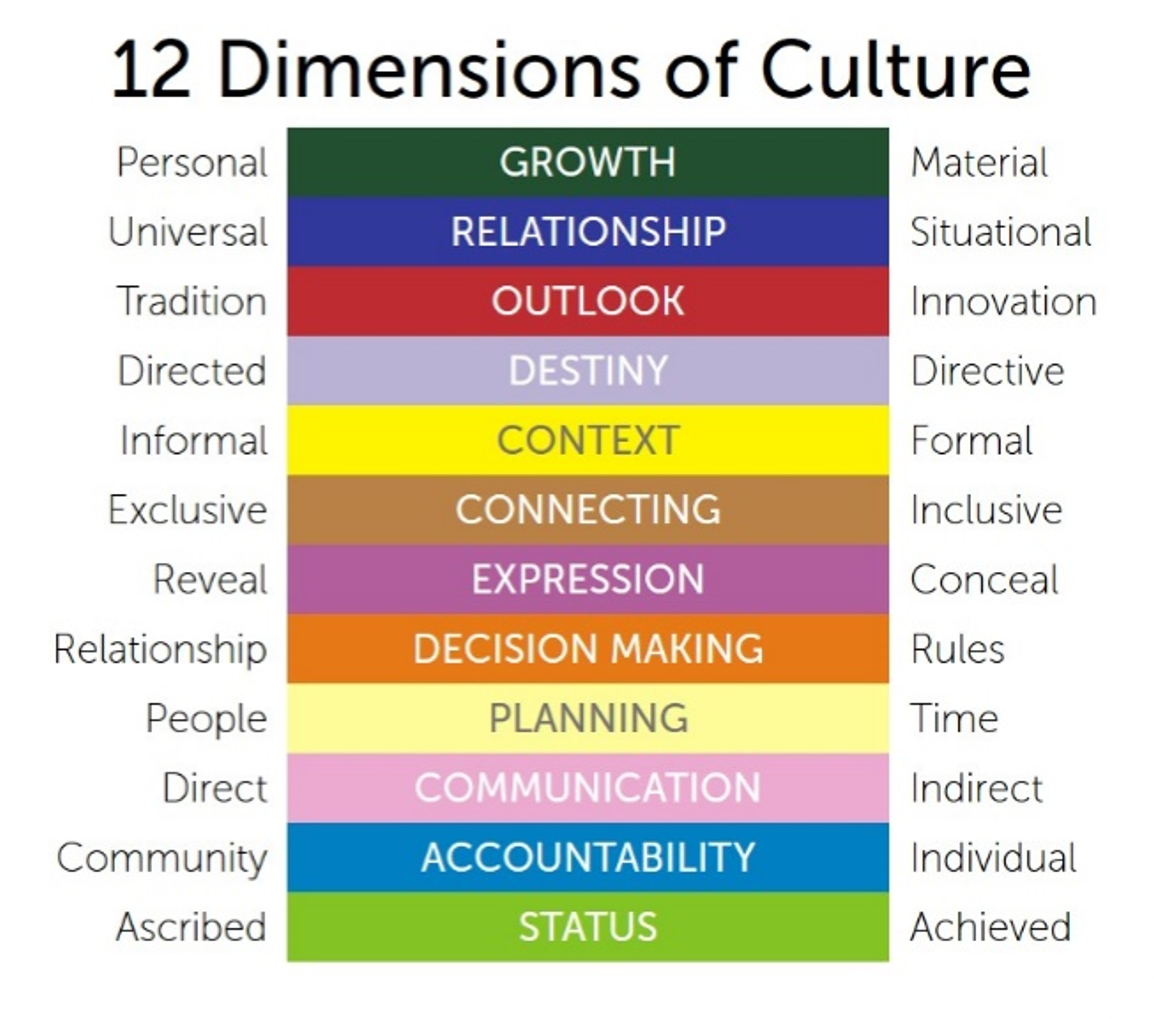What do you notice first in a new intercultural situation? Is it people's clothes? How people greet each other? These things are part of the dimension of Context: the unwritten rules of formality on what is appropriate and not appropriate in a given situation.
The Cultural Mapping Inventory, our tool for identifying cultural preferences in each of the 12 Dimensions of Culture, measures Context on a spectrum from Formal to Informal.
Formal cultures tend to have more behavioral rules, and the rules are important in day-to-day situations. In many countries, language adapts around peoples' titles, ages, rank and family relationships. In Korea, a person’s hierarchical position in society can be discerned from the grammar used to address them, similar to older versions of some European languages.
Informal cultures, on the other hand, have fewer rules; and the rules that govern interaction are not as important.
Which Fork Do I Use?
The dimension of Context is one people talk about frequently when discussing cultural differences, as it touches every area of life. People love to recount what's appropriate and not appropriate, and how it is different from their culture of origin. In the business world this includes things like dress code, order of seating, proper introductions and greetings, and the way you write emails or letters.
But these things gain an added dimension of complexity when we try to figure out why one person seems to be in higher authority than another despite the fact their seniority in the company is lower. In some places, corporate structures are secondary to the tribal structures built into society. You may need to figure out how to use those tribal structures to orient yourself and find the right entry point.
Formal vs Formal
Friction not only arises between formal cultures and informal ones, but also between two formal cultures. People from different formal cultures may consider each other inappropriate or disrespectful because they are following different rules.
For example, in some formal business cultures, people include chit-chat about the weekend and family in emails to establish a personal connection. But in others, one is expected to stick to business and leave personal matters at home. Mentioning one's home life might come across as unprofessional.
It's important to establish what is acceptable when it comes to the level of formality on a team. For example:
- Does your team use titles at all times?
- Can you ask a one line question in an email as if you were texting, or should you go through a ritual of establishing a virtual connection following a certain layout with "Dear Sir/Madam"?
- What about communication from an employee to a manager? Should that be different than peer-to-peer?
While many people feel these things out in the course of time, it is sometimes worth discussing Context explicitly when you are gathering a new team, especially on teams where there could be diversity in this dimension.
Different Contexts, Different Rules
This discussion is most important when it goes beyond your immediate team. There are client-facing relationships. If an employee goes out to visit a client with his or her boss, the same level of formality used in the office may not be appropriate. The boss may need to take the lead and the employee speak only if spoken to. If the employee is too informal our team could lose a contract because he or she appears disrespectful.
Conventional wisdom in this dimension is to err on the side of formality. You can dress down, but you can’t dress up if you aim too low. Don’t sit until offered a seat. If in doubt, use “Mr” and “Mrs”.
The Role of Formality in Relationships
A common misconception in cultures oriented toward individual accountability is that being formal is largely a personal choice, an expression of personal identity. But there is much more to it.
Formality and informality are tools for relating to people. In making decisions about being formal, think about how you can best express your desire to connect with the person you want to. The other person becomes the reference point, motivated by what you’re trying to achieve. What will they expect and how will they perceive what I do?
This is tough for many people. It is hardest when the expression of formality needed is not part of your culture. In an extreme example – as a woman in an Islamic context such as Saudi Arabia – do I wear an abaya or hijab (headcovering) if everyone else will be?
This is an area to be flexible in, around an ongoing conversation. We have found that instead of thinking primarily of expressing yourself, it's better to ask questions like “How might the way I appear and carry myself affect the development of this relationship and getting a contract?” You may need to have this discussion on your team right now.
Observe the interplay of conventions around Context in this scene from Anna and the King:
* Originally published on KnowledgeWorkx
- Log in to post comments






